 |
Convert MPEG to WAV
|
Total Audio MP3 Converter converts MPEG to WAV. The software is an ALL-IN-ONE
audio converter that supports more than 150 audio and video files, and supports
batch conversion.
- Free Download Total Audio MP3 Converter
- Install the Program by Step-by-step Instructions
- Launch Total Audio MP3 Converter by Clicking Start -> All Programs
-> Total Audio MP3 Converter -> Total Audio MP3 Converter
- Choose MPEG Files
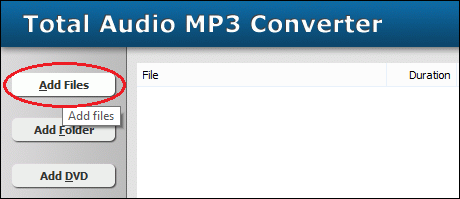
Click "Add Files" button to choose MPEG files and add them
to conversion list.
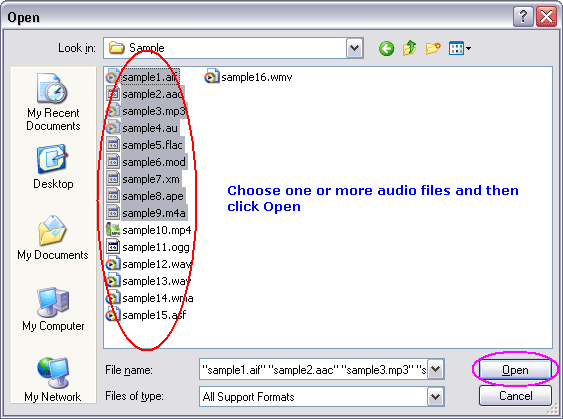
Choose one or more MPEG files you want to convert and then click Open.
- Choose "to WAV"
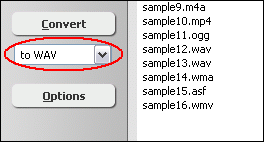
- Convert MPEG to WAV
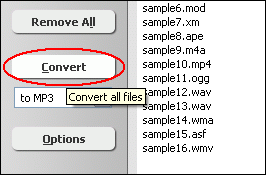
Click "Convert" to convert MPEG files to WAV format.
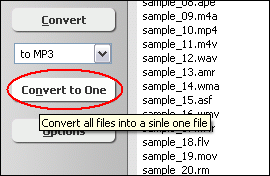
Alternatively, you could click "Convert to One" to convert
and combine/join/merge multiple MPEG files to one WAV.
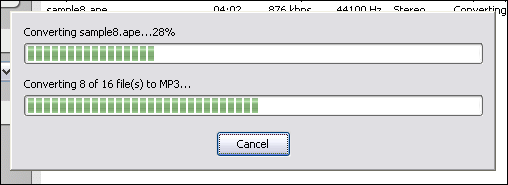
The software is converting MPEG files to WAV format.
- Play & Browse
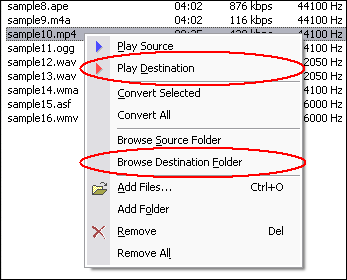
Right-click converted item and choose "Play Destination" to play
the destination file, choose "Browse Destination Folder" to open
Windows Explorer to browse the destination file.
- Done
Top
What is MPEG?
The Moving Picture Experts Group (MPEG) was formed by the ISO to set standards
for audio and video compression and transmission. Its first meeting was in May
1988 in Ottawa, Canada. As of late 2005, MPEG has grown to include approximately
350 members per meeting from various industries, universities, and research institutions.
MPEG's official designation is ISO/IEC JTC1/SC29 WG11.
The MPEG standards consist of different Parts. Each part covers a certain aspect
of the whole specification. The standards also specify Profiles and Levels. Profiles
are intended to define a set of tools that are available, and Levels define the
range of appropriate values for the properties associated with them. MPEG has
standardized the following compression formats and ancillary standards:
- MPEG-1: The first compression standard for audio and video. It was
basically designed to allow moving pictures and sound to be encoded into the bitrate
of a Compact Disc. To meet the low bit requirement, MPEG-1 downsamples the images,
as well as uses picture rates of only 24-30 Hz, resulting in a moderate quality.
It includes the popular Layer 3 (MP3) audio compression format.
- MPEG-2: Transport, video and audio standards for broadcast-quality
television. MPEG-2 standard was considerably broader in scope and of wider appeal
¨C supporting interlacing and high definition. MPEG-2 is considered important
because it has been chosen as the compression scheme for over-the-air digital
television ATSC, DVB and ISDB, digital satellite TV services like Dish Network,
digital cable television signals, SVCD, and DVD.
- MPEG-3: Developments in standardizing scalable and multi-resolution
compression which would have become MPEG-3 were ready by the time MPEG-2 was to
be standardized; hence, these were incorporated into MPEG-2 and as a result there
is no MPEG-3 standard. MPEG-3 is not to be confused with MP3, which is MPEG-1
Audio Layer 3.
- MPEG-4: MPEG-4 uses further coding tools with additional complexity
to achieve higher compression factors than MPEG-2. In addition to more efficient
coding of video, MPEG-4 moves closer to computer graphics applications. In more
complex profiles, the MPEG-4 decoder effectively becomes a rendering processor
and the compressed bitstream describes three-dimensional shapes and surface texture.
MPEG-4 also provides Intellectual Property Management and Protection (IPMP) which
provides the facility to use proprietary technologies to manage and protect content
like digital rights management. Several new higher-efficiency video standards
(newer than MPEG-2 Video) are included (an alternative to MPEG-2 Video), notably:
- MPEG-4 Part 2 (or Simple and Advanced Simple Profile) and
- MPEG-4 AVC (or MPEG-4 Part 10 or H.264). MPEG-4 AVC may be used on
HD DVD and Blu-ray discs, along with VC-1 and MPEG-2.
In addition, the following standards, while not sequential advances to the
video encoding standard as with MPEG-1 through MPEG-4, are referred to by similar
notation:
- MPEG-7: A multimedia content description standard.
- MPEG-21: MPEG describes this standard as a multimedia framework.
Moreover, relatively more recently than other standards above, MPEG has started
following international standards; each of the standards holds multiple MPEG technologies
for a way of application. For example, MPEG-A includes a number of technologies
on multimedia application format.
- MPEG-A: Multimedia application format.
- MPEG-B: MPEG systems technologies.
- MPEG-C: MPEG video technologies.
- MPEG-D: MPEG audio technologies.
- MPEG-E: Multimedia Middleware.
What is WAV?
WAV (or WAVE), short for Waveform audio format, is a Microsoft and IBM audio file
format standard for storing an audio bitstream on PCs. It is a variant of the
RIFF bitstream format method for storing data in "chunks", and thus also close
to the IFF and the AIFF format used on Amiga and Macintosh computers, respectively.
It is the main format used on Windows systems for raw and typically uncompressed
audio. The default bitstream encoding is the Microsoft Pulse Code Modulation (PCM)
format.
MPEG to WAV Related Topics:
MPC to WAV,
MTM to WAV,
OGG to WAV,
S3M to WAV,
WAV to AMR,
WMA to WAV,
WV to WAV,
DVD to WAV,
MKV to WAV,
MMF to WAV,
3GPP to WAV,
ALAC to WAV,
CD to WAV,
DAT to WAV,
H264 to WAV,
HDTV to WAV,
KAR to WAV,
M1A to WAV,
M1V to WAV,
NSA to WAV,
NSV to WAV,
NUT to WAV,
OGA to WAV,
OGV to WAV,
RAM to WAV,
RA to WAV,
RMI to WAV,
RM to WAV,
RMVB to WAV,
SWF to WAV,
TS to WAV,
VCD to WAV,
WMD to WAV,
XVID to WAV,
WAVE Converter
|







